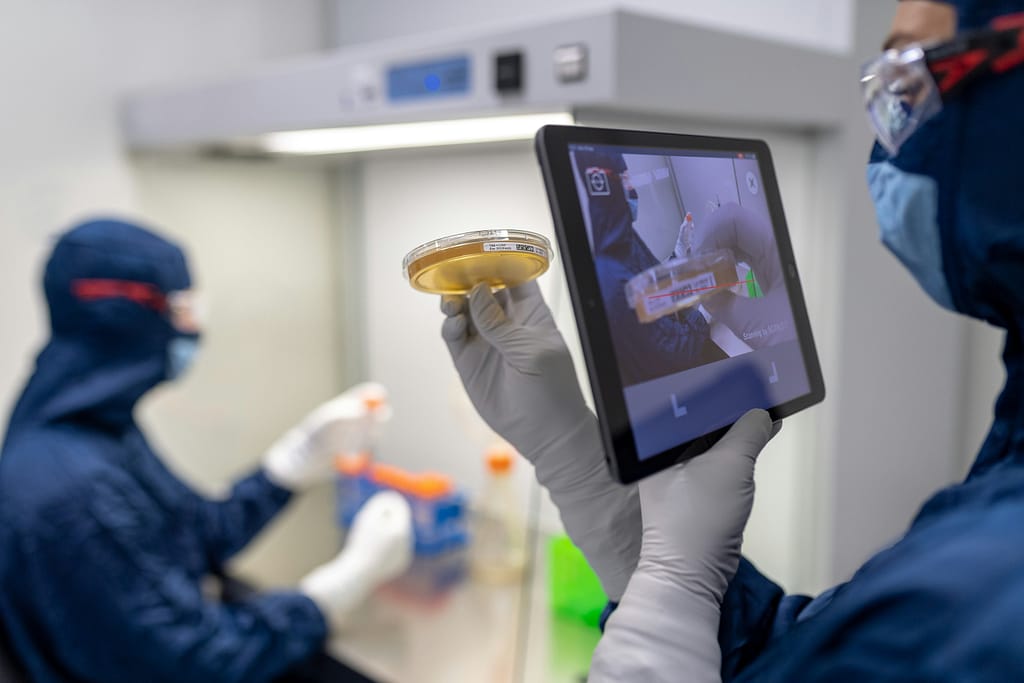The health of our environment is more critical than ever. Nowadays, an environmental monitoring plan (EMP) serves as a cornerstone in our efforts to safeguard natural ecosystems, ensure public health, and promote sustainable development. But exactly what is an environmental monitoring plan, you may wonder?
These plans provide systematic methods to observe, track, and analyze environmental parameters, offering invaluable data that informs policy, mitigates potential ecological impacts, and fosters accountability among industries and governments.
Whether assessing air and water quality, monitoring wildlife populations, or tracking changes in soil and vegetation, environmental monitoring plans employ advanced technologies and methodologies to comprehensively understand environmental conditions.
In this article, we will explore the essential components of an effective environmental monitoring plan, the technologies and techniques involved, and the pivotal role these plans play in environmental management.
Read also: Where can I buy a tracking device for my business?
What is an environmental monitoring plan?

An environmental monitoring plan is a strategic approach aimed at systematically observing, recording, and analyzing various environmental parameters to ensure compliance with regulatory standards and to safeguard the environment from potential negative impacts of human activities.
EMPs are critical in a variety of sectors, including industrial operations, construction projects, natural resource management, and urban planning.
The successful creation and implementation of an environmental monitoring plan involves a series of key components.
1. Objective and scope
Objective
The first step to understanding what is an environmental monitoring plan is to establish its specific goals.
Objectives can include ensuring compliance with legal and regulatory standards, protecting and preserving specific ecosystems, assessing sources and levels of pollution, monitoring the impacts of human activities, and providing data to support environmental management decisions.
Clearly articulated objectives help in focusing efforts and resources effectively.
Scope
Identifies the spatial and temporal boundaries of the monitoring efforts. This includes:
- Spatial boundaries: Specific geographic locations or sites where monitoring will take place. This can range from localized areas, such as a single construction site, to larger regions like watersheds or air basins.
- Temporal boundaries: The timeframe over which monitoring will occur. This may include initial baseline data collection, ongoing monitoring during project activities, and post-activity monitoring to assess long-term impacts.
2. Baseline data collection
Purpose
Establishes baseline conditions of the environment before the start of a project or activity to understand the pre-existing state of the environment. This provides a reference point to detect changes and assess impacts and is an important part of what is an environmental monitoring plan.
Parameters
According to the needs of the institution, many environmental parameters can be measured. The establishment of these parameters is often the most important aspect of what is an environmental monitoring plan.
Some examples of possible parameters are:
- Air quality: Measure levels of pollutants such as particulate matter (PM2.5, PM10), nitrogen oxides (NOx), sulfur oxides (SOx), volatile organic compounds (VOCs), and ozone (O3).
- Water quality: Assess parameters such as pH, temperature, dissolved oxygen (DO), biological oxygen demand (BOD), chemical oxygen demand (COD), and contaminants like heavy metals and pesticides.
- Soil conditions: Analyze soil texture, pH, organic matter content, nutrient levels, and the presence of heavy metals or other contaminants.
- Biodiversity: Record species diversity, abundance, and health indicators of flora and fauna in the area.
- Noise levels: Measure ambient noise levels to establish a baseline for assessing changes due to project activities.
Read also: Carbon footprint tracker: how the calculation works

3. Methodology
Sampling methods
It describes how samples will be collected, preserved, and analyzed, and ensures methods are standardized and scientifically valid to maintain consistency and reliability of data. This includes:
- Air sampling: Use of air filters, active and passive samplers, and real-time monitoring instruments.
- Water sampling: Collection methods for surface water, groundwater, and effluent; use of grab samples, composite samples, and automated samplers.
- Soil sampling: Techniques for surface and subsurface soil collection, ensuring representative samples from different depths and locations.
- Biological sampling: Methods for surveying and monitoring flora and fauna, including transects, quadrats, and capture-recapture techniques.
Frequency and timing
Determine how often and when monitoring will take place to accurately capture environmental variations.
This includes baseline monitoring (conducted before project activities begin), operational monitoring (ongoing during the project to track impacts), and post-operational monitoring (conducted after project completion to assess recovery or long-term effects).
4. Instrumentation and technology
Another important part of what is an environmental monitoring plan is the list of equipment and technology used for monitoring, which may include:
- Air-quality measuring tools: Real-time monitors for PM, NOx, SOx, VOCs, and ozone.
- Water sampling kits: Automated samplers, multi-parameter probes, and laboratory analysis equipment.
- Soil testing kits: Portable soil analyzers, pH meters, and laboratory equipment for heavy metal analysis.
- Remote sensing technology: Drones, satellite imagery, and GIS tools for large-scale environmental monitoring.
5. Data management and analysis
Data collection
Outline procedures for systematic data collection and storage, ensuring data integrity and accessibility. This includes how the data will be logged and which data loggers and software will be used for recording and storing data, as well as the storage systems, including databases and cloud storage solutions.
Data analysis
The analysis of data is the final goal of what is an environmental monitoring plan. It specifies statistical and analytical methods to interpret the collected data.
This often includes descriptive statistics, trend analysis, and inferential statistics to detect significant changes or patterns and the use of environmental models to predict future conditions and assess potential impacts.
Quality control
To guarantee the validity of the plan, it is also important to implement robust quality control measures to ensure data reliability and validity. This includes regular calibration of instruments and equipment, detailed standard operating procedures for all monitoring activities, and cross-checking data for accuracy and consistency.

6. Reporting and documentation
Reporting guidelines
Establish protocols for regular reporting – including the report formats, the frequency of reporting, and the guidelines for distributing reports to stakeholders such as regulatory agencies, project proponents, and the overall public.
Documentation
Ensure thorough documentation of methods, findings, and any deviations from the plan.
This regularly includes detailed descriptions of sampling and analysis methods, the presentation of monitoring results and their respective interpretations, and the documentation of any changes or deviations from the original plan and their justifications.
7. Compliance and adaptive management
With all the data collected, analyzed, and reported, now is the time for the leadership to ensure the monitoring plan aligns with relevant environmental regulations and standards.
This includes adherence to local, national, and international environmental laws and regulations, which may include compliance with any number of guidelines, like the World Health Organization (WHO) guidelines or the newest Corporate Sustainability Reporting Directive (CSRD).
Read also: CSRD report in 2024: a full guide
Also, compliance with industry standards and best practices for environmental monitoring Incorporate adaptive management practices to adjust monitoring activities based on findings and changing conditions.
Regular review of monitoring results to assess effectiveness, identify needed adjustments, and modify monitoring strategies in response to new information or unexpected outcomes is a good example.

Datanet IoT: your environmental tracking solutions for ecological monitoring plans await
Hopefully, by now, you understand what is an environmental monitoring plan and the steps to develop one. It is pivotal for the success of the plan to work with trustworthy environmental tracking solutions – and in that regard, we here at Datanet IoT are ready to help you with our products.
So contact us to schedule a presentation and learn more about our services!
Read also: GPS tracking for trucking companies and Scope 3 emissions







